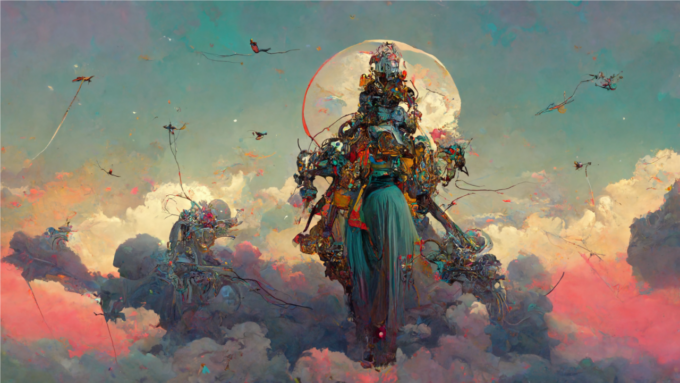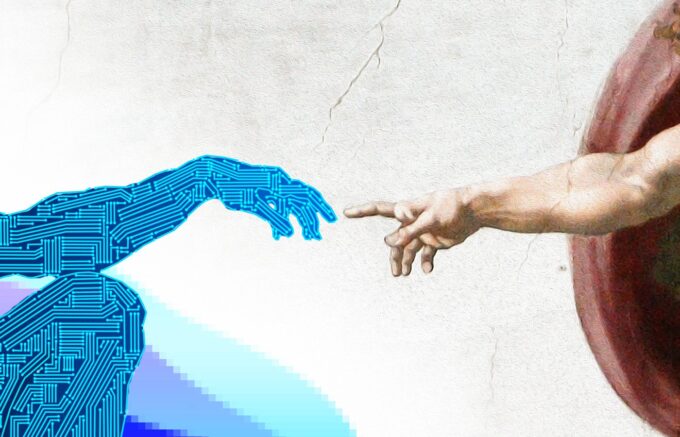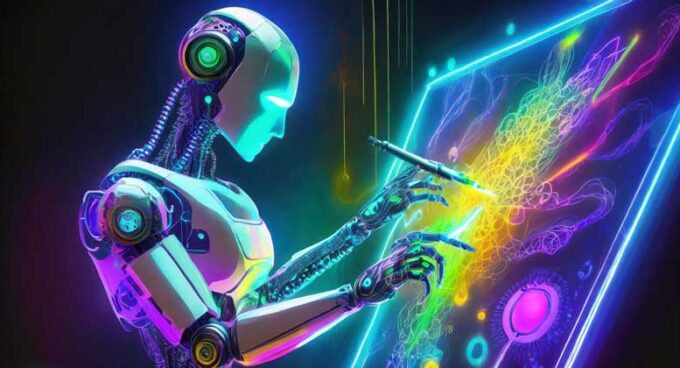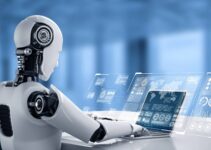In recent years, the fusion of artificial intelligence (AI) and art has sparked a revolution in the creative landscape. AI art generators, fueled by advanced algorithms and deep learning techniques, have emerged as powerful tools for artists, designers, and enthusiasts alike. Among the myriad applications of AI in the realm of art, one particularly fascinating domain is the development of AI art generators and background removers. In this comprehensive exploration, we delve into the innovations, challenges, and opportunities shaping the future of AI art generators, with a specific focus on their transformative potential and the evolving landscape of digital creativity.
Evolution of AI Art Generators

Source: linkedin.com
The journey of AI art generators traces back to the early experiments in computational creativity. Initially, these systems were rudimentary, capable of producing simplistic and often derivative artworks. However, with the advent of deep learning and neural network architectures, AI art generators underwent a metamorphosis. They became more sophisticated, capable of learning from vast datasets of artistic styles and producing compelling, original compositions.
The integration of AI with art creation not only democratized the creative process but also challenged conventional notions of authorship and artistic expression. AI art generators, such as those leveraging generative adversarial networks (GANs), can autonomously generate artwork that blurs the line between human and machine creativity. Moreover, these systems have the ability to learn and adapt, continually refining their outputs based on feedback and data input.
The Role of Background Removers in AI Art Generation
A crucial component of AI art generators is the background remover functionality. Traditionally, artists spend significant time and effort meticulously removing backgrounds from images to isolate subjects. However, with AI-powered background removers, this process becomes significantly streamlined. The integration of background remover into AI art generators opens up new possibilities for artistic experimentation. Artists can seamlessly blend different elements and backgrounds to create surreal or hyper-realistic compositions. Moreover, the removal of background distractions enables viewers to focus solely on the central subject, enhancing the impact and storytelling potential of the artwork.
Evolution of AI Art Generators

Source: techrepublic.com
The journey of AI art generators traces back to the early experiments in computational creativity. Initially, these systems were rudimentary, capable of producing simplistic and often derivative artworks. However, with the advent of deep learning and neural network architectures, AI art generators underwent a metamorphosis. They became more sophisticated, capable of learning from vast datasets of artistic styles and producing compelling, original compositions.
The integration of AI with art creation not only democratized the creative process but also challenged conventional notions of authorship and artistic expression. The technology behind these generators is constantly evolving. Here are some key innovations pushing the boundaries of what’s possible:
- Advanced Algorithms: Deep learning algorithms like Generative Adversarial Networks (GANs) are becoming increasingly sophisticated. These algorithms essentially pit two neural networks against each other, with one creating images and the other trying to distinguish them from real photos. This competitive process leads to the generation of highly realistic and detailed artwork.
- Multimodal Learning: AI art generators are no longer confined to just visual data. Some are incorporating text and audio descriptions into their training datasets. This allows for a more nuanced understanding of artistic concepts and the generation of artwork that resonates with a broader range of emotions and ideas.
- Style Transfer: Imagine feeding a photo of your pet into an AI and receiving a painting of it in the style of Van Gogh! Style transfer algorithms are becoming adept at mimicking the artistic styles of different eras and artists. This opens up a new avenue for artistic exploration and allows users to personalize their creations.
- Interactive Art Generation: The future of AI art might involve real-time interaction with the generator. Imagine providing a textual prompt and then iteratively refining the results through voice commands or gestures. This level of interactivity could lead to a more dynamic and collaborative artistic process.
Challenges and Considerations on the Road Ahead
Despite their remarkable capabilities, AI art generators are not without their challenges. Here are some key considerations for the future:
- Originality and Authorship: Who is the real artist – the human who provides the prompt or the AI that generates the image? This question regarding authorship is a complex one, and copyright laws may need to adapt to this new paradigm.
- Bias and Fairness: AI algorithms are only as good as the data they’re trained on. If the training data is biased, the generated artwork could reflect those biases. Mitigating bias in AI art creation requires careful curation of datasets and ongoing efforts to ensure fair representation.
- The Human Touch: While AI art generators can produce breathtaking visuals, they may lack the emotional depth and personal connection that often defines human-made art. The future may lie in a harmonious collaboration between human and artificial creativity.
Opportunities for Collaboration and Innovation

Source: aitificial.blog
Amidst the challenges, the future of AI art generators is ripe with opportunities for collaboration and innovation. By fostering interdisciplinary partnerships between artists, technologists, and ethicists, we can harness the full potential of AI to push the boundaries of creativity. Moreover, integrating AI art generators into educational curricula can empower the next generation of artists to explore new mediums and techniques.
Furthermore, the commercial applications of AI art generator are vast and diverse. From personalized digital content creation to immersive virtual experiences, AI-powered artwork has the potential to revolutionize industries ranging from advertising to entertainment. By embracing these technologies responsibly and ethically, we can unlock new avenues for artistic expression and cultural enrichment.
Conclusion: A Vision for the Future
In the grand tapestry of human history, the emergence of AI art generators represents a pivotal moment of convergence between technology and creativity. As we stand on the threshold of this brave new world, let us embrace the opportunities it presents with optimism and resolve.
Let us envision a future where AI art generators serve as catalysts for innovation, democratizing access to the arts and fostering cultural exchange and understanding. Let us strive to create a future where the boundaries between human and machine creativity blur, giving rise to new forms of expression that transcend the limitations of either alone.
In this vision of the future, art becomes not merely a product but a process—a journey of exploration and discovery that unites us in our shared humanity. Together, let us embark on this journey, guided by the principles of creativity, compassion, and collective stewardship, as we shape a future where the possibilities of AI art generation are limited only by the bounds of our imagination.



